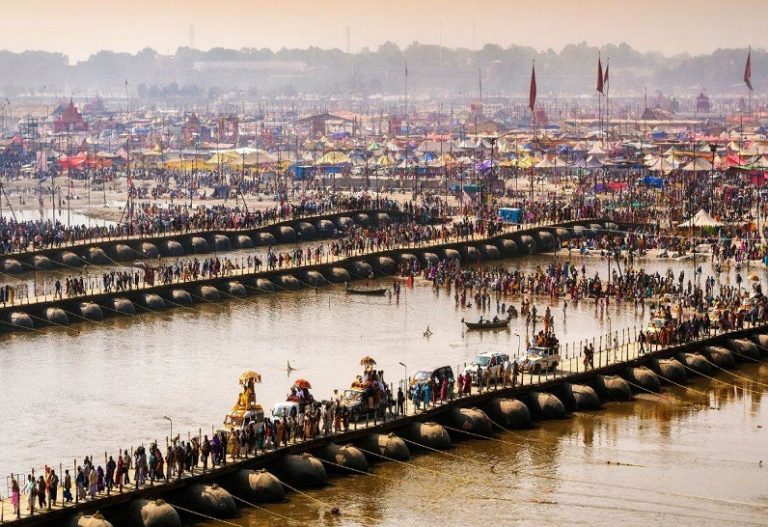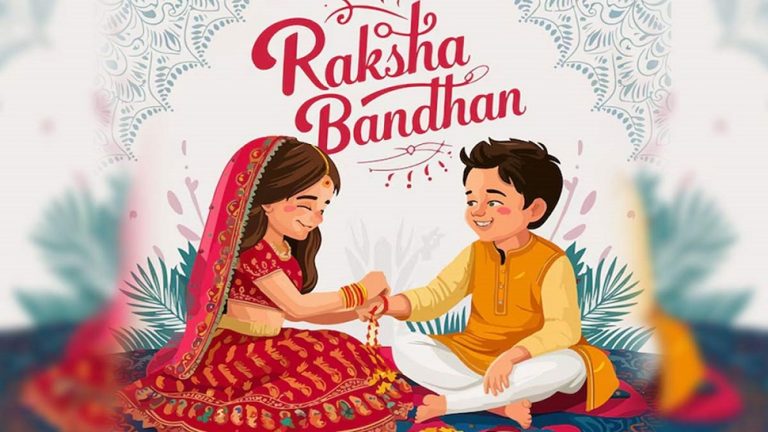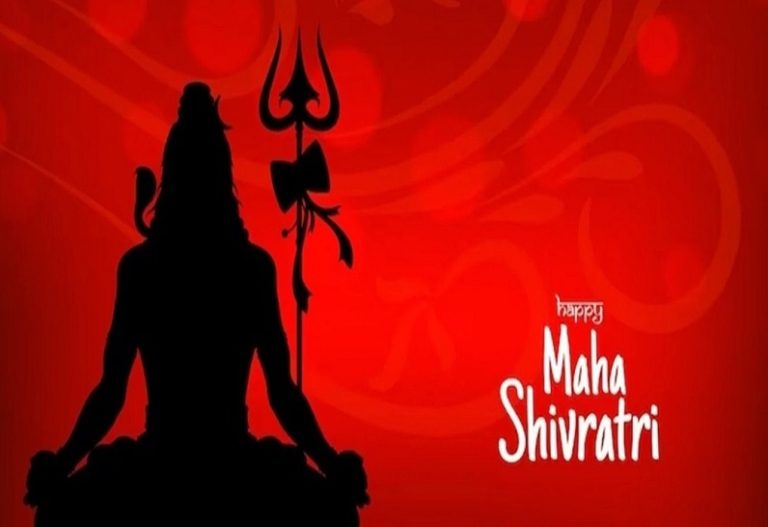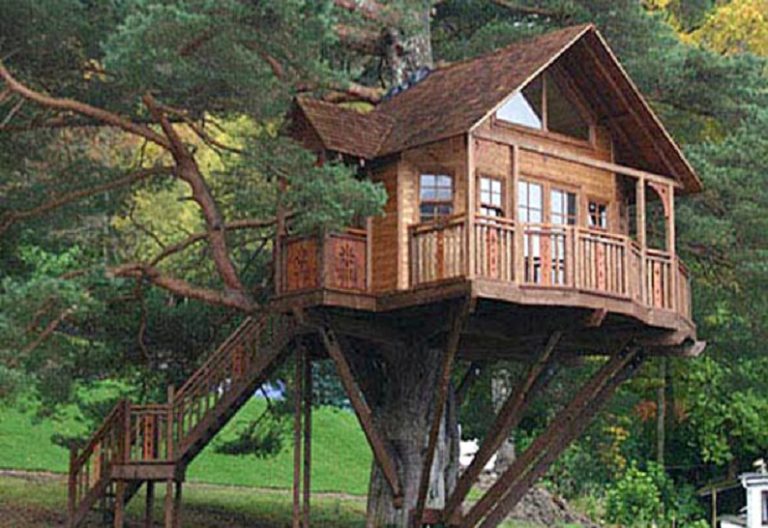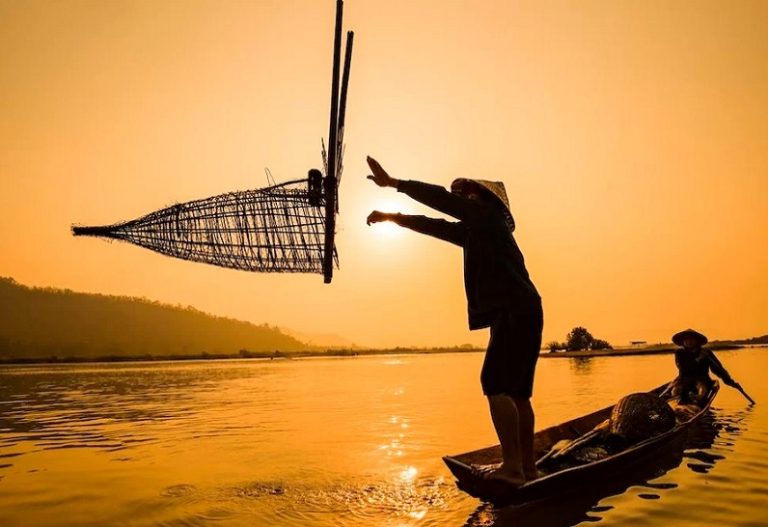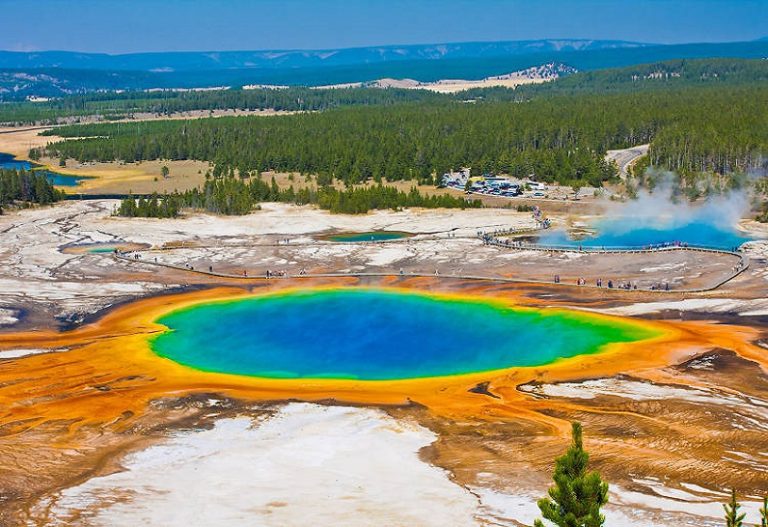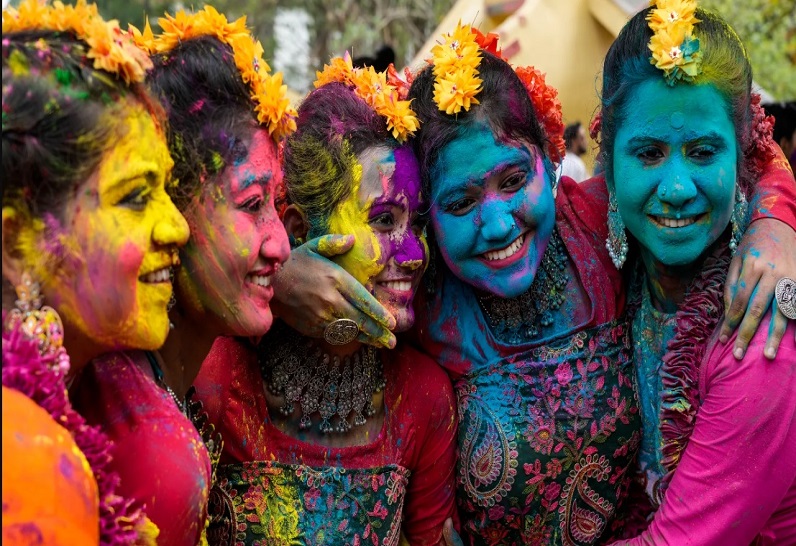
One of the major festivals of India, the Holi festival commemorates the victory of good over evil, particularly the burning and destruction of a demoness named Holika.
When is the Holi Festival celebrated in India?
The Holi Festival is celebrated on the day after the full moon in the month of Phalgun which is March as per the Gregorian calendar each year.
History of the Holi festival
Holi is a festival of cultural and traditional beliefs which has been celebrated since very ancient times. Holi is described in many Indian sacred books like Puranas and Ratnavali. On the day of Holi, on this day married women worship God for the happiness and prosperity of their families.
Calculating the Day of Holi
There are two ways of reckoning a lunar month- ‘purnimanta’ and ‘amanta’. In the former, the first day starts after the full moon; and in the latter, after the new moon. Though the amanta reckoning is more common now, the purnimanta was very much in vogue in the earlier days.
According to this purnimanta reckoning, Phalguna Purnima was the last day of the year and the new year heralding the Vasanta-Ritu (with spring starting from the next day). Thus the full moon festival of Holika gradually became a festival of merrymaking, announcing the commencement of the spring season. This perhaps explains the other names of this festival – Vasanta-Mahotsava and Kama-Mahotsava.
Reference in Ancient Texts and Inscriptions
Besides having a detailed description of the Vedas and Puranas such as Narad Purana and Bhavishya Purana, the festival of Holi finds a mention in Jaimini Mimansa. A stone inscription belonging to 300 BC found at Ramgarh in the province of Vindhya has a mention of Holikotsav on it. King Harsha, has mentioned Holi Utsav in his work Ratnavali which was written during the 7th century.
The famous Muslim tourist – Ulbaruni too has mentioned Holi Utsav in his historical memories. Other Muslim writers of that period have mentioned, that Holi Utsav was not only celebrated by the Hindus but also by the Muslims.
Reference in Ancient Paintings and Murals
The festival of Holi also finds a reference in the sculptures on walls of old temples. A 16th-century panel sculpted in a temple at Hampi, the capital of Vijayanagar, shows a joyous scene of Holi. The painting depicts a Prince and his Princess standing amidst maids waiting with syringes or pichkaris to drench the Royal couple in the coloured water.
A 16th-century Ahmednagar painting is on the theme of Vasanta Ragini – spring song or music. It shows a royal couple sitting on a grand swing, while maidens are playing music and spraying colours with pichkaris.
Legends and Mythology
Holi also celebrates the legend of Radha and Krishna which describes the extreme delight, Krishna took in applying colour to Radha and other gopis. This prank of Krishna later became a trend and a part of the Holi festivities.
Mythology also states that Holi is the celebration of the death of Ogress Pootana who tried to kill an infant, Krishna by feeding poisonous milk to it.
Another legend of Holi which is extremely popular in Southern India is that of Lord Shiva and Kamadeva. According to the legend, people in the south celebrate the sacrifice of the Lord of Passion Kaamadeva who risked his life to revoke Lord Shiva from meditation and save the world.
Also, popular is the legend of Ogress Dhundhi who used to trouble children in the kingdom of Raghu and was ultimately chased away by the pranks of the children on the day of Holi. Showing their belief in the legend, children to date play pranks and hurl abuses at the time of Holika Dahan.
Where is Holi Celebrated in India?
The festival of Holi the “Festival of Colors” may be celebrated with various names and people of different states might be following different traditions. In West Bengal and Odisha the state of India, where Holi is celebrated as “Dol Jatra” or “Dol Purnima” on the same day as “Holika Dahan”. In addition, in some parts of India, such as Mathura and Vrindavan the Holi Festival commences a week or so earlier.
Importance of the Holi festival
Holi is a festival of colours and love. This is a major festival celebrated by Hindus every year. On this day almost all of India celebrates with great pomp. People celebrate this festival with their relatives, family and friends and celebrate with great enthusiasm.
Holi Festival in India
Bonfires: People create bonfires on the eve of Holi in order to celebrate the victory of good over evil. It is the most joyful moment. This occasion is used to sing, dance and socialise with families and friends. This activity is called Holika Dahan. People relish Holi by drinking bhang and a treat prepared from cannabis paste. This will help people to relax during the festival.
Playing colour: People across the country play with coloured powder and water during Holi. This is an amazing activity to exhibit respect and devotion to friends and families.
Worship the Idol of Radha: Randha, the lover of Lord Krishna and the Hindu Goddess, was the first woman to be poured with colour as a mark of affection. In order to exhibit respect for Goddess Radha, many people sing Holi songs.
The customs and rituals may be different across regions but what unites them is the spirit of this festival of colours.

